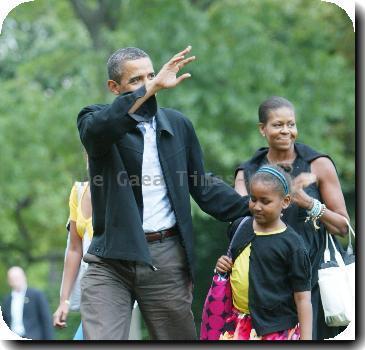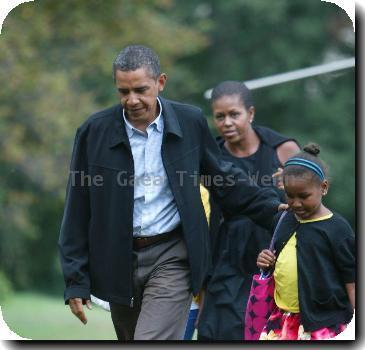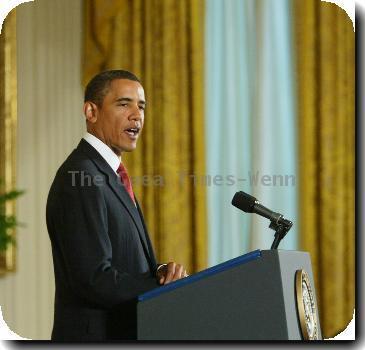Jobless rate drops to 10 percent in Nov.; employers shed 11,000 jobs, fewest since Dec. 2007
By APFriday, December 4, 2009
Nov. jobless rate falls to 10 pct., 11K job cuts
WASHINGTON — Two years of steep job cuts all but ended last month, unexpectedly pulling down the unemployment rate and raising hopes for a lasting economic recovery.
Federal figures released Friday showed that the rate fell from 10.2 percent in October to 10 percent as employers shed the fewest number of jobs since the recession began two years ago. The government also said far fewer jobs were lost in September and October than first reported.
And the so-called underemployment rate, counting part-time workers who want full-time jobs and laid-off workers who have given up their job hunt, also fell, from 17.5 percent in October to 17.2 percent.
The better-than-expected figures provided a rare dose of good news for the economy, but the respite may be temporary. Job creation is still so weak that more than 15 million out-of-work Americans face fierce competition for few openings.
“We will need very substantial job growth to get unemployment lower, especially when the labor force … starts growing again,” said Lawrence Mishel, president of the Economic Policy Institute, a liberal think tank.
Even counting last month’s decline, the unemployment rate has more than doubled from 4.9 percent when the recession began.
The report showed how hard it remains to find work. The number of people jobless for at least six months rose last month to 5.9 million. And the average length of unemployment has risen to more than 28 weeks, the longest on record dating to 1948.
Carolyn Malone of Milwaukee had not looked for work in decades — until she was laid off from her customer-service job in May.
Malone, 62, laughed when asked Friday how many jobs she had applied for. She can’t remember. But she does recall how many landed her an interview: One. It didn’t lead to a job.
“I just want to get my toe in the door,” she said, scrolling through her e-mail at a hiring center.
Still, economists and investors drew hope from Friday’s Labor Department report. Employers sliced just 11,000 jobs in November, compared with a loss of 111,000 jobs in October. It was the best reading since December 2007 — the last time the economy added jobs and the start of the worst recession since the 1930s.
The unemployment rate had not fallen since July, when it declined from 9.5 percent to 9.4 percent.
Factories, retailers, construction companies — hardest hit by the recession — all slowed the pace of layoffs in November. So did transportation companies and those in leisure and hospitality.
Job gains were produced in education, health care and professional and business services, which mostly reflected temporary hiring. The government added workers, too. Those included states and localities, mainly reflecting the hiring of teachers.
President Barack Obama welcomed the news but lamented that too many Americans “have felt the gut punch of a pink slip.”
Facing the prospect of high unemployment well into the 2012 presidential election year, Obama is drafting a proposal to try to stimulate hiring.
“We need to grow jobs and get America back to work as quickly as we can,” he said.
Just a month ago, an unexpected spike in the unemployment rate caused some economists to predict it could climb as high as 11 percent. But Friday’s report lessened that pessimism, and economists doubted the rate would reach that point.
Still, the jobless rate is expected to resume moving higher, perhaps to 10.5 percent or more by the middle of next year, before drifting down. That’s because the recovery is likely to be too weak to spur the job creation needed to quickly drive down the unemployment rate.
The Federal Reserve has estimated that the rate could remain as high as 7.6 percent in 2012.
“The economic storm destroyed more than 7 million jobs over the last two years, and it will take more than two years to get them back,” said Bill Cheney, chief economist at John Hancock. “The economy is still weak.”
Competition for jobs is so intense that Marla Goldman of Spring Hill, Tenn., has heard back from only six prospective employers out of 100 she’s applied to since losing her job with an electronics systems company in October.
She made it to a fifth interview with a company, which booked her a plane ticket to Florida and even sent her an itinerary. But two days later, the company decided to wait on the job until after Jan. 1.
“There are just far more candidates for every job than there are jobs,” said Goldman, 50.
To rev up hiring, Obama plans to send Congress a list of ideas, including new tax breaks for small businesses that hire, some new spending on roads, bridges and other construction and grants to state and local governments to avoid layoffs, according to an official who spoke on condition of anonymity because the package was still being crafted.
Congress is not likely to take up a job-creation package until after New Year’s.
The administration credits its $787 billion package of tax cuts and increased government spending with improving employment, though Republicans argue it did not help much. The Fed’s record-low interest rates, along with other moves to drive down loan rates and stimulate borrowing, have supported the economic rebound.
Most economists said they did not think the better-than-expected jobs news would cause the Fed to raise rates sooner. That’s because they predict the jobless rate will remain high and job creation too sluggish. Most analysts do not expect the economy to add jobs consistently each month until spring.
Until employers gain confidence in the recovery, they will be reluctant to ramp up hiring. The few industries creating jobs will probably include health care, education, legal services, data processing, transportation, high-tech manufacturing, electrical power generation and jobs involved in making homes and buildings more energy-efficient, according to Labor Secretary Hilda Solis and private economists.
But November’s report suggested that the worst of the job losses are past. And figures out Friday showed that job losses in September and October were not nearly as deep as previously estimated.
The government said 159,000 few jobs were cut in those two months combined. Such revisions are based on more complete information the government gets from companies it surveys. From January through March, the economy lost at least 600,000 jobs each month.
Employment has improved more in some other countries. Canada, for instance, said Friday that its economy added 79,000 jobs last month, reducing its jobless rate to 8.5 percent from 8.6 percent. Canada did not suffer the type of housing meltdown and financial crisis that slammed the U.S. economy last year.
Associated Press writers Philip Elliott in Allentown, Pa., Emily Fredrix in Milwaukee and Andrew Taylor in Washington contributed to this report.
Tags: Barack Obama, Business And Professional Services, Canada, Careers, Christmas, Economist, Energy, Job Hunting, Jobs report, Labor Economy, Milwaukee, North America, Personnel, Recessions And Depressions, Service Sector Performance, United States, Us-economy, Utilities, Washington, Wisconsin







